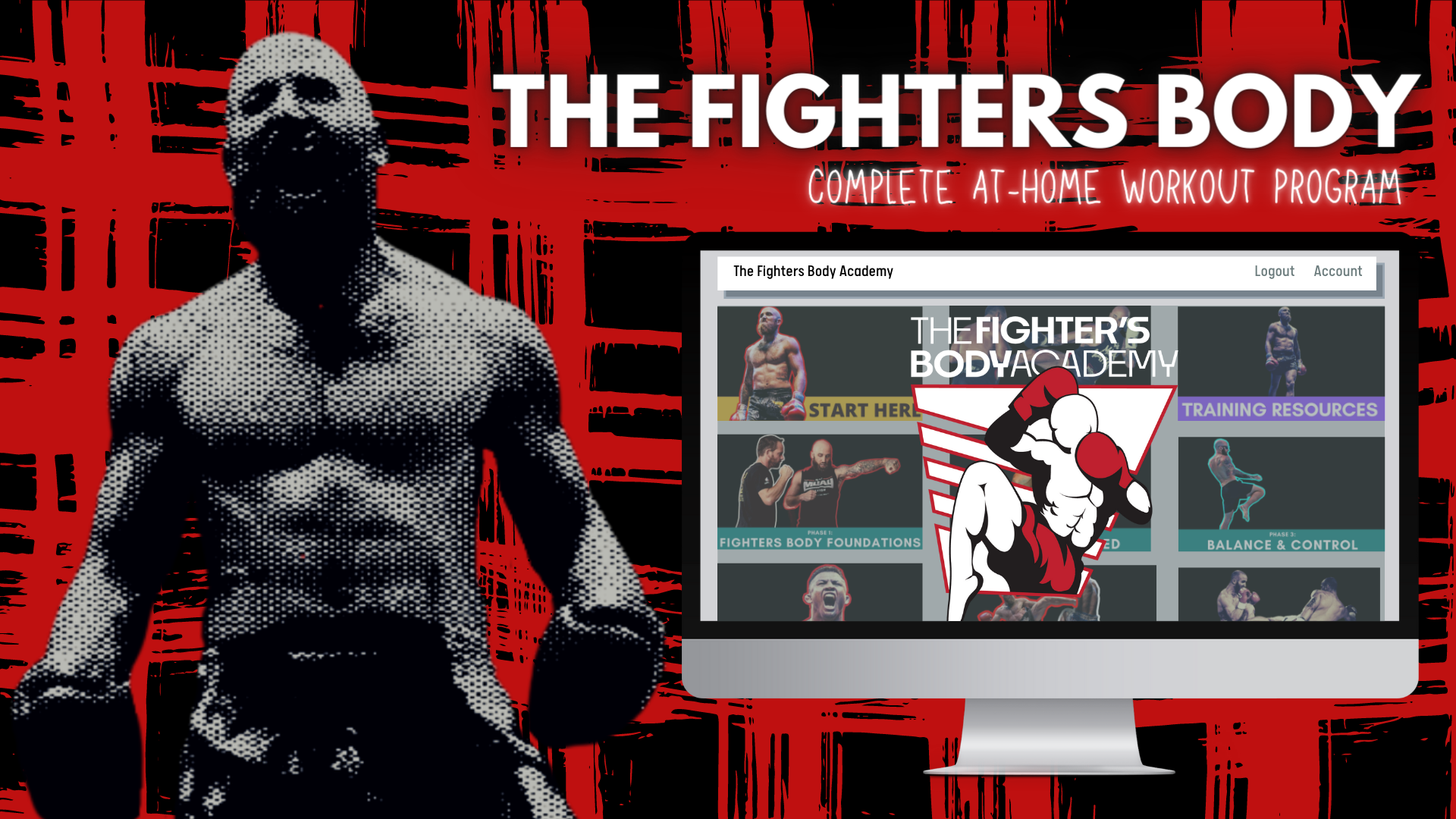Your Guide To Training Muay Thai At Home

Introduction To Principles, Analyses & Self-Education
By Sean Fagan
For many souls, the gym is our home away from home. But what if our home was our gym…wouldn’t that be nice?
This post is going to go over training in any environment, with minimal equipment, no partners and only your body.
The hope is that this post will challenge you to embrace positive constraints. That may sound like an oxymoron, but one ought to run with the understanding that there are times where it’s better to find the right box to think in than trying to think outside the box.
A proper set of constraints forces you into a position where thinking laterally is the only option.
This post encourages you to ask questions such as:
“How would I be training if I had no sparring partners available to me?”
“How would I train punching power without a heavybag or mitt work?”,
“How could I emulate the conditions of a fight with no tools?”
Time to get creative. Let’s begin first and foremost, as one always should, with principles.
3 Key Principles Of Training Muay Thai Alone

#1. Focus On One Thing At A Time
Fighting is about developing habits, muscle memory. How do you think one would fair if a man attempted to quit smoking, commit to working out, become vegan, and sleep early, all in the same period?
He’d fail.
Having one clear goal will make your progression easy to measure and thus easy to manage.
In order to learn we must build confidence first. Set one extremely specific goal (i.e. working on the pivot for a right high-kick) and put all your efforts toward it.
#2. Reduce Complexity
There’s no shame in starting small. Get the ball rolling first with small wins, beginning is the hardest step, so make it easy.
#3. Learn clear principles
Honing principles should be the first step in learning any skill because principles are broad and malleable. Bear in mind, principles are rules and rules aren’t meant to be broken, they’re meant to be followed.
If a “rule” can be broken then it isn’t a rule, it’s a guideline.
Take for instance a principle of memory: meaningfulness. We remember best what we find meaningful, therefore in order to remember something best we apply meaning to it by finding a pattern, rhymes, or familiarity.
For example, “in 1492 Columbus sailed the ocean blue” is far easier to memorize than “Columbus discovered America in 1492.” Ever wonder why it’s so difficult to learn foreign language vocabulary? Because the words have no meaning. Violate principles and learning will be more difficult.
“As to methods there may be a million and then some, but principles are few. The man who grasps principles can successfully select his own methods. The man who tries methods, ignoring principles, is sure to have trouble.”
The above principles are intended for broad application and can be applied to all skills, whether you want to fight or whether you want to learn a language.
The below training methods shall be tailored specifically for fighting, though within there shall still be principles (which I will put in bold):
Muay Thai Training Methods For Training Solo
#1. Shadowboxing
Shadowboxing is one of the best warm ups you can do because it is made for you to emulate the conditions of a fight while allowing you to practice proper technique and form.
Fighting is muscle memory, and the more opportunity you have to practice proper footwork techniques and striking techniques then the better you shall be able to perform.
If you’re not cultivating quality you’re cultivating sloppiness.
(If you have a camera, even better, we’ll incorporate it later)
Follow Along Shadowboxing Workout For Muay Thai
#2. Work the tree, nature’s heavy bag
This method piggybacks off of shadowboxing (hence, 1B), which we’re going to take one step further by bringing in a tree (or punching bag) while addressing a deficiency of shadowboxing.
I will not consider this a violation of the “body only” rule because…trees are everywhere. Therefore, unless you’re in a desert (there’s cacti, but I wouldn’t recommend punching or kicking them), you should be able to utilize this method.
I’ve seen the shrouds of skepticism surrounding bag work (or tree work) and it is viewed by some to be a waste of time, but the simple response is:it isn’t, people just don’t know how to use it.
How then, do you work the heavy bag? Or tree? You treat it the same way you would shadowboxing, except instead of punching the air, you’re hitting a solid object with far less give.
This further sharpens the need for precision and proper form. The importance of cultivating quality rings truer here than it does in shadowboxing, because if you punch the air with poor form you needn’t worry about harm, but should you punch a tree with sloppy technique? You can break a wrist, easily.
View hitting a solid object as cementing of your technique, this is where it counts, it’s where the scaffolding and training wheels are removed. Then we see how your technique stands.
Follow Along Heavy Bag Workout For Muay Thai
#3. Study fights
Watching a fight shouldn’t be viewed as a passive task, just as reading a book shouldn’t be a passive task. Watching a fight and reading a book are both interactive processes that require back and forth communication between the viewer/reader and what’s being viewed/read.
Fighting, reading, or any process, must be active. How then, might you ask, turn watching/reading into an active process? By asking questions.
Asking questions encourages you to dive deeper and thus allows you to find answers you wouldn’t normally otherwise find (this is lateral thinking in action). This is a broad subject, so let’s reduce the complexity and break it down to specifics using an example:
How to analyze a fight
Ever wonder what it is about folks like Lawrence Kenshin and Jack Slack that allows them to break down fights so well?
To chip away at the boulders we see and find in them beautiful stone carvings. They each have an uncanny ability to analyze and ask the right questions. Here's some good questions to ask when you're breaking down fights.
“Whenever you watch a fight from now on, try to pinpoint why it turned out the way it did:
What was giving the loser trouble?
What was giving the winner trouble – should the loser have used this tactic more readily?
In the event of a knockout (or even submission) what made the hole for the technique?”
There you have it. You not only have principles but you have a method for training and a method for analyzing, not just fights, but your training (whip out that camera and film EVERYTHING).
View this not just as a guide for training at home, but as a single step towards independence, towards self-education.
Self-education is difficult and time consuming, but there are grand pay offs that increase your knowledge and understanding of a subject.
How To Get Lean & Muscular While Learning To Strike Like a Pro Fighter At Home, With ZERO Equipment
Are You Ready To Take Your Training To The Next Level?
Then you'll LOVE my 24-month Muay Thai + Fitness program,
THE FIGHTERS BODY ACADEMY:
-
140+ Follow-Along Workouts
-
24 Done-For-You Workout Calendars
-
Clickable Workout Calendar
-
Muay Thai Striking Crash Course
-
Live Workout Calls
-
No Equipment Necessary
-
Cancel Anytime!
Follow The Blueprint That's Led Hundreds Of Men & Women To Lose 5-15 Pounds, Sculpt A Muscular Physique, and Learn How To Fight...
All In The First 30 Days.
TRY A SAMPLE WORKOUT FROM THE FIGHTERS BODY
Click here to learn more about The FIGHTERS BODY ACADEMY
Feed Your Muay Thai Addiction!
Join our "Muay Thai Mondays" email newsletter for the latest updates on new videos, special events and everything Muay Thai!










